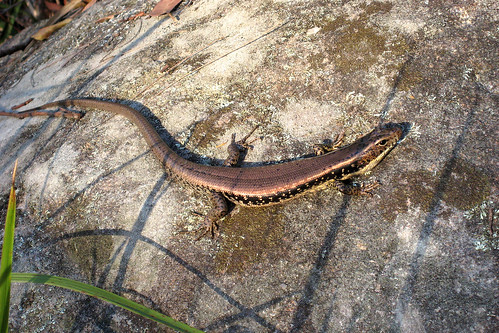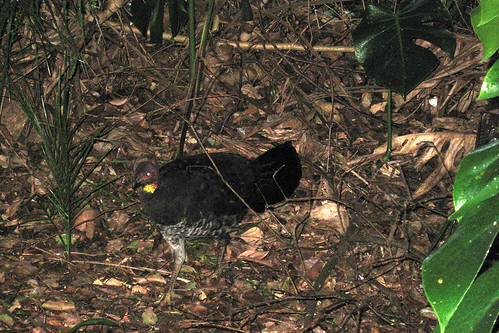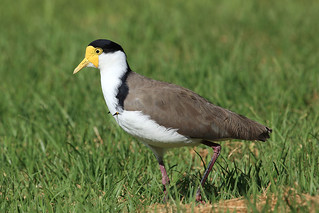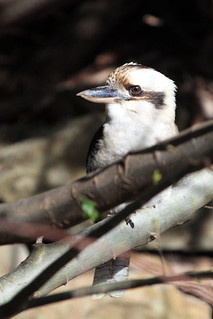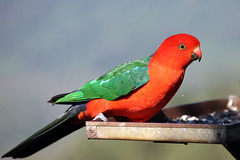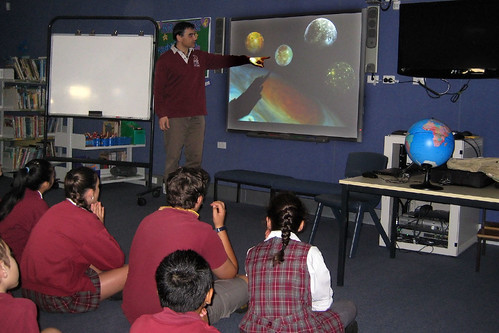 I spent the day today at Brookvale Public School, in northern Sydney. It was a visit as part of the CISRO’s (the Australian government research agency) Scientists in Schools program. Working scientists get teamed up with school teachers and organise various programs together. With my relatively limited time, I found a teacher who was okay with a fairly low-key arrangement, in which I visit the school a few times a year and talk to the kids, showing them some cool science stuff. Today was my first visit!
I spent the day today at Brookvale Public School, in northern Sydney. It was a visit as part of the CISRO’s (the Australian government research agency) Scientists in Schools program. Working scientists get teamed up with school teachers and organise various programs together. With my relatively limited time, I found a teacher who was okay with a fairly low-key arrangement, in which I visit the school a few times a year and talk to the kids, showing them some cool science stuff. Today was my first visit!
I put together a slideshow about astronomy, starting with planets and moons, and heading towards stars near the end of what I’d prepared. The teachers set me up in their nice new library, and brought various classes in throughout the day for me to talk to. It started at 9am with the oldest kids in the school, years 5 and 6 (ages 10-11 or so). They were very attentive and well behaved, and were clearly bursting with questions at various stages. I showed them the planets stuff for about 45 minutes, and got on to the very start of the material about stars, showing them how spectral lines let us see what stars are made of, and that our sun is a star. Then we had 15 minutes of questions. Some of the things they asked were very deep and took a bit of explaining to answer!
Next was the year 1 and 2 classes (6-7 years old). This was slightly trickier, because I had to adjust my vocabulary more to fit their comprehension. Also, this school has a lot of kids from recently immigrated families, and who are learning English as their second language. After an hour with them, it was recess time! I haven’t had recess for years!
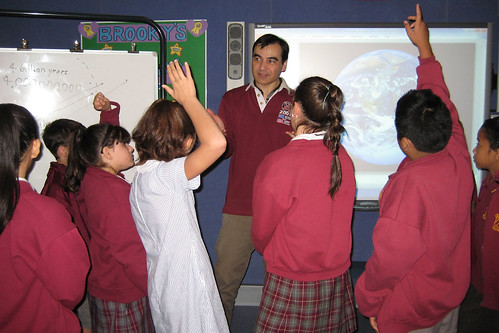 The next session was with years 3 and 4, and then after them was kindergarten! These sessions were a bit shorter, about 45 minutes each. I think that was enough for the little ones – they were a lot more excitable and broke into chatter a few times. I was glad the teachers were there to calm them down! For the year 3 and 4s, I did a straight 45 minutes of presenting slides and talking about them, with no room for questions. This was because they had a second session with me after lunch, entirely for questions, because they are currently doing a science project on space. I took a well-earned breather at lunch, and then it was a full hour of answering questions from these excited kids.
The next session was with years 3 and 4, and then after them was kindergarten! These sessions were a bit shorter, about 45 minutes each. I think that was enough for the little ones – they were a lot more excitable and broke into chatter a few times. I was glad the teachers were there to calm them down! For the year 3 and 4s, I did a straight 45 minutes of presenting slides and talking about them, with no room for questions. This was because they had a second session with me after lunch, entirely for questions, because they are currently doing a science project on space. I took a well-earned breather at lunch, and then it was a full hour of answering questions from these excited kids.
The slides I showed were mostly images of planets and moons, both from telescopes and also various space probes. I also showed them some of the scientists who discovered various things. I included plenty of females: Annie Cannon, Linda Morabito, Carolyn Porco – in fact I mentioned more female scientists than males – to make sure the kids got the chance to see that girls can be scientists.
The questions were widely varied. One boy had obviously been reading up on things, because he asked me about the metal snow on Venus(!). One of the kindergarten kids had the cutest question, when I mentioned that Mars was a bit like a desert here on Earth, with no trees and no water, and she asked if it had camels. It was a little exhausting, having to talk and think on my feet for a full day with a bunch of excitable kids, but it was a fantastic experience. I’m planning on another visit to the school later this year. I don’t know what I’ll talk about then – I need to work that out with the teachers. But I’m sure it’ll be fun!

